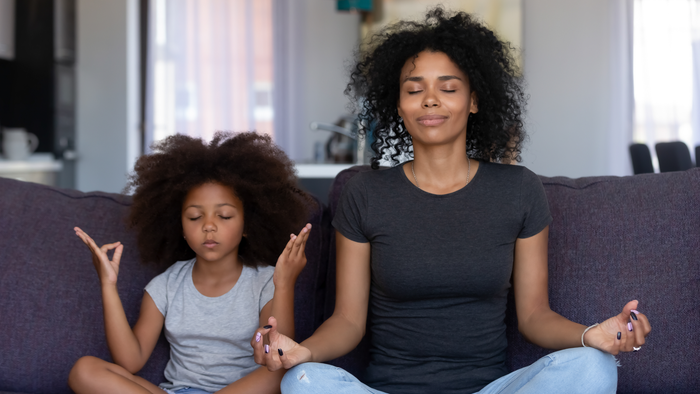The right tips for reflection are critical for the outcome of your contemplation practice. An ever increasing number of individuals begin to reflect consistently, looking for harmony, comfort, and individual improvement.
Numerous novices of reflection are wrongly directed and, thus, there are huge number of courses accessible for contemplation, showing reflection in different ways — some in seven days, other in 10-days course. There are end of the week courses on reflection, the majority of them making the inception of your contemplation practice considerably seriously confounding.
You don’t have to understand books or any seminars on contemplation that go for days or weeks. Utilize these three hints for reflection, and you’ll encounter a fast and legitimate commencement in the act of contemplation.
No matter what your insight about contemplation, on the off chance that you apply these tips as displayed, you’ll encounter a thoughtful perspective and comprehend what reflection truly is and how to appropriately think.
As a Raja Yoga Educator, I study and practice contemplation for quite a long time and my top to bottom examination into the way of thinking and brain research of yoga has given me the information implanted in these tips I’ll show you here.
Reflection Is a Natural Action
The idea of reflection has created in the old insight of the Brihadaranyaka and Chandogya Upanishad, tracing all the way back to the previous piece of the first Thousand years BCE.
The sutra that opens up the Chandogya Upanishad is:
“Allow a man to reflect on OM.”
Later on, the idea of reflection developed in customs as Jainism and Buddhism having different sorts of definitions and strategies. However, the goal of every definition is the same: to observe and investigate the human mind.
I’ll use the definition of meditation from the original Yoga texts—the Yoga Sutras of Patanjali—as a quick reference when discussing meditation:
“Tatra Pratyayaikatanaataa Dhyaanam”
This implies that reflection is the consistent spotlight on an article, subject, picture, or thought.
Before providing you with suggestions for a successful meditation practice, it is essential to stress that meditation is an internal communication between your ego and intelligence that cannot be learned outside of yourself.
1. Knowing
For the actual novice of reflection, the first and most significant hint on contemplation is to realize that you go to your psyche.
This tip goes before the tips on the most proficient method to sit right or think simultaneously (early or late) at a similar corner of your home. Recognize that meditation can be practiced at any time (morning, noon, or night) and in any setting (bathroom, bedroom, kitchen, park, etc.); furthermore, in any position (lying, sitting, or standing).
The psychological movement of contemplation, which has a mental and otherworldly reason, can’t be molded by time, place. or then again structure. This actually intends that before you get going with the physiological parts of your contemplation practice, you realize that you join in:
your insight,
your recollections,
your minds,
your misguided judgments, and
your rest.
These five mental variances make your considerations, sentiments, and feelings. Consequently, you develop a particular mood—a state of being—that either helps or hinders your meditation progress.
Perhaps of the most widely recognized botch that novices do in intercession is getting took part in the parts of their body and psyche. Almost throughout the entirety of the meditation session, they focus on these distractions, resulting in:
consistent sensations of distress;
considerations of failure to play out the training; what’s more,
feelings they don’t have the foggiest idea and attempt to dispose of.
Pay close attention to this first tip and make it the foundation of your meditation practice if you want to avoid making this error. Ensure you realize that you go to your psyche so you’ll begin reflecting.
2. Changing
Being a novice, you can last a couple of moments in the legitimate reflection process, so it’s wasteful and inadequate to get busy with your body position, area, spot, and time before the acknowledgment of the principal tip for intercession — the information that you are going to your brain and it is characteristic and quick to know that this work.
Adjustment can take care of your:
Asana (body act which can empower you to sit immovably and serenely for a drawn out timeframe);
Pranayama (control of relaxing);
Pratyahara (withdrawal of the faculties); also,
Dharana (focus).
By the over four, I expressly mean:
Asana: Your body feels firm and agreeable — ready to stay in that favored situation for the relegated timeframe (5, 10, 15, or even 30 minutes). Try not to think this is no joking matter here; this step can require a couple of moments until you have changed your body position. For setting up your body to sit immovably and serenely you can utilize specific yoga stances (particularly the squat posture).
Pranayama: You are following the stream of your inhalation and exhalation as your breathing goes smoothly. In addition, this only takes a second. Make use of breathing exercises to get a sense of what pranayama is.
Pratyahara: During the exercise, your senses are shut off. This does not imply that you try to ignore your body’s sensations (hands, legs, skin) or ignore external sounds or touch. These endeavors are basically interruptions for your training. What you do is simply let every one of the approaching signs from the outside upgrades stream and cross your thoughts without distinguishing them. The signals will gradually fade away in this manner, and you won’t even notice them anymore. That is a withdrawal of the faculties.
Dharana: Your psyche sorts out on a specific item. This includes initiation of the feeling of sight (this makes Pratyahara incomprehensible). Thus, I suggest fixing your brain on your relaxing. This ensures that all three remaining criteria—Pranayama, Pratyahara, and Dharana—are met simultaneously.
At times in your contemplation works out, you’ll have to change these four components more and some of the time less. Whenever you’re progressed in the act of reflection, you’ll execute the first and the subsequent tip so impeccably to where they are essentially a piece of you.
3. Noticing
After the information you’ve acquired from the primary tip and the changes that you’ve produced using the subsequent tip, presently you have just something single left to do: observe. By this, I mean inward perception as reflection.
Stay in a condition of perception of your psychological condition, anything that it is. Contemplation is the proper thing for you to examine and zero in on yourself, particularly when you’re encircled by antagonism.
In the early stages of your practice, it is more likely that your mental state changes. Here is the main disarray among fixation and reflection that specialists battle with:
At the point when your condition moves, the contemplation closures and changes starting with one topic then onto the next, and another reflection cycle starts — here the brain focuses on the new topic. Assuming that the requirement for focus moves over and over again and excessively fast the professional is up to speed in rehearsing fixation and not reflection.
However, if you practice consistently, you will be able to observe and be aware of this shift, and eventually, your mind will become increasingly stable to the point where you will be able to focus solely on one subject at a time.
Marcus Aurelius expressed in his book, Contemplations, that a persistent practice will satisfy your life:
On the off chance that you finish the work in a principled manner, with steadiness, energy and persistence, in the event that you keep yourself liberated from interruptions, and keep the soul inside you flawless, as though you could need to give it back all of a sudden — On the off chance that you can embrace this without dread or assumption — can find satisfaction in the thing you’re doing now, as Nature expected, and in godlike honesty (each word, each expression) — then your life will be blissful. Nobody can forestall that.









